How to measure mechanics of single cells
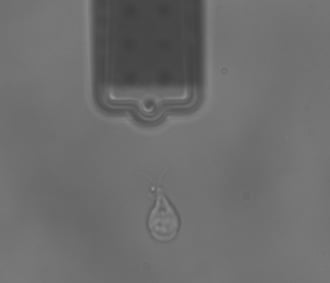
06.11.2024
The ultimate tool for nanoscale research from biological molecules to advanced new materials.
The versatile mid-range research AFM that grows with your demands in modes and accessories.
A compact affordable research AFM that is astoundingly easy to use, with more than 30 modes and options.
Fastest reliable sub-Angstrom surface roughness metrology.
Bringing the power of DriveAFM to a wafer metrology system purpose-built for the requirements of the semiconductor industry.
Measure roughness and other material properties of heavy and large samples up to 300 mm and 45 kg.
For unique requirements, we will design a bespoke AFM solution, leveraging our decades of engineering expertise.
Slide an AFM onto your upright optical microscope turret for a leap in resolution.
One of the smallest ever AFMs, created for integration into custom stages or existing setups.
A flexibly mountable research-grade scan head for integration into custom stages or existing set ups.
What is atomic force microscopy (AFM)? How does AFM work? What AFM modes do I really need? How do I get started with AFM?
Learn how AFM works with cantilever/tip assembly interacting with the sample. Explore CleanDrive technology, calibration methods, and feedback principles for precise nanoscale imaging.
An overview of common AFM modes. To learn about each mode in more detail and see application, view the full article.
We regularly publish detailed reviews providing practical guidance and theoretical background on various AFM applications.
Read detailed technical descriptions about selected AFM techniques and learn how to perform specific measurements on Nanosurf instruments.
A library of links to research papers in which Nanosurf instruments were used.
Learn AFM from our library of recorded webinars, covering different measurement techniques, modes, and areas of application.
Short video clips explaining how to perform different operations on Nanosurf instruments.
Watch a product demonstration to learn about the capabilities of our AFMs.
Short videos of our AFMs.
Browse news articles, press releases and a variety of other articles all around Nanosurf
Browse Héctor Corte-Léon's weekly experiments, for inspiration, entertainment, and to discover everyday applications of AFM.
Héctor here, your AFM expert at Nanosurf calling out for people to share their Friday afternoon experiments. Today I bring you jewelry.
Some time ago I showed you what the shell of mother-of-pearl looks like, and I also imaged some buttons to see if they were really made of mother-of-pearl or plastic.
Long story short, mother-of-pearl shell is made of nacre which consists in tiles (a.k.a. aragonite tablets) that arrange in layers. I saw these layers when imaging in the mother-of-pearl and all the buttons... so I guess all the buttons where "real".
You can see that fridayAFM here.
However, as nice and colorful as the shell is... the most famous thing is not the shell, it is the pearls. So, since I published that fridayAFM, I started looking for some pearls (on a budget), because I wanted to see if we can use an AFM to determine if the pearls are real or fake. A quick Google search tells me that the "household" methods involve acid, cutting the pearls, or using a lighter. Since all these methods are destructive (and we don't necessarily want to destroy the jewelry), checking what the AFM (non destructive) can tell, will be very interesting.
These are the pearls I got for this fridayAFM. Some of ebay, some from local charities, and in principle, none of them authenticated.
On this occasion I will use the FlexAFM system, and a cork padded vise to hold the rings in place. Lucky for me, the system has enough room to place the vise and the rings under the AFM.
I start with the mother-of-pearl shell ring, because I think, due to its low price, it is unlikely to be fake.
I have to admit that this one confused me a lot at the beginning, because I couldn't identify what I was looking at. My motto is that the best AFM images are taken when you already know 90% of what to expect and the AFM brings you the next 5% (the other 5% is still unknown, I don't want to be too ambitious). But in this case, knowing too much was misleading me as I was expecting something similar to the images I took of the mother-of-pearl shell. It turns out that this ring was cut at an angle and it is not the top layer of the mother-of-pearl shell, but almost like a cross section. Which by the way it is very cool, st it was something I wanted to do in the fridayAFM of the mother pearl and I couldn't figure out how to cut the shell and leave a flat surface to be imaged.
Next I went for the earrings and the pendant. They came from the same shop, and look like belonging to the same set, but they were sold separately and there is no guarantee they go together. By the way, from here on, I changed to Static force mode as I notice I was interacting with contamination and it was hard to keep it from becoming attached to the probe. (I mean, in Static force it doesn't matter too much if the probe gets contaminated as long as it is still sharp... but in Dynamic mode, it might modify the resonant frequency of the probe and then it messes up the imaging).
This one is what I was expecting. Since I put out the mother-of-pearl images, I had several discussions online, and I learnt that sometimes jewelry has protective coatings. So I was expecting a coating, the question that remains is if there is nacre under the coating or not. Lucky for me, the coating has enough holes to let me see through, otherwise I would have to use some solvent... In any case, through the holes I can see structures with terraces, but they are too small for them to be nacre, and there is no trace of the aragonite tablets anywhere. So, conclusión, a fake pearl. Which by the way, one could have told just by looking at the base of the earring. They melted the material to introduce the metal rod... and nacre doesn't melt like that... plastic does.
Next one is the pendant. I no longer have high hopes ... but one never knows...
Unfortunately, this is again the same type of structures as in the earrings, so fake again. However, it is very interesting the terraced structures seen through the holes. I cannot quite make up yet what these are (well, I do know now, but if I tell you, you wouldn't keep reading). In any case, a knife and a little bit of scratching of tears of the coating revealing the inside of the fake pearl.
Three pearls so far, three fake. Surely the one in the nice box has to be real. I was skeptical of grey pearls, but checking online it turns out that this brand is well known for the colored pearls. By the way, I cannot find this particular ring in their catalog, so maybe it is an old model?
It is not, its a fake. Somebody probably took a real box and stuck a fake ring in it, that is why the design looks similar to the rings of that brand but not quite. In any case, if there were doubts, I scratched it and it peeled of easily revealing the inside, which seems like plastic. By the way, inside plastic, and again these terraces... but thanks to a lucky find I know what they are. These are terraces in calcite, and according to Wikipedia, plastic, calcite and iridescent nylon are quite common materials used in fake pearls. So mystery solved. But hold on, did I get a real pearl in the end or not?
Lucky for me, the last one was real.
The terraces were evident even in the optical microscope, and it is the sphere with most defects. By the way, I changed the color scheme to match the fridayAFM about mother-of-pearl.
So... in the end we did find a real pearl (which now I will treasure for a long time), and it is worth between £50 to £2000 according to Google... much more than the price I paid for it, but taking into account the time spent, the probes, and the AFM... it is probably not a good investment.
I hope you enjoyed what I showed you. Stay in touch, and if you have more info, please share.
If you made it this far, here is another fridayAFM on jewelry. In this case it is the silica sphere that produces the light interference to create the rainbow color effect. Note: from the discussions we had on LinkedIn and Twitter, I learnt that sometimes these rings are coated with a protective layer, so I was looking fur such layer in the pearl rings.

06.11.2024
How to measure mechanics of single cells
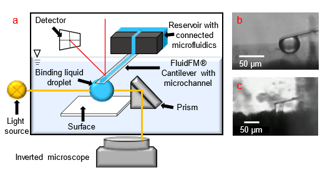
14.05.2024
How to measure forces between droplets
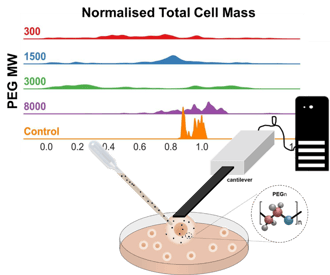
11.03.2024
How to perform mass measurements in cell exposed to different environments.

08.12.2024
Learn how to make a Python code to interface your AFM with a gamepad.
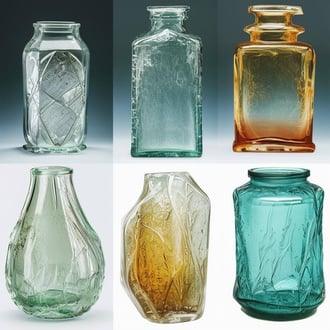
01.10.2024
FridayAFM: learn how the extreme sensitivity of AFM can reveal the glass ageing process.
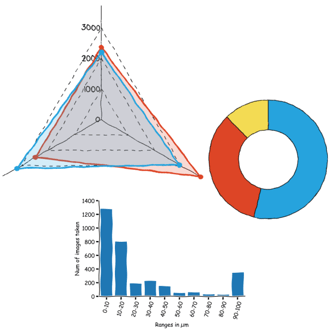
11.07.2024
FridayAFM: learn how to perform datamining on large sets of AFM data.
Interested in learning more? If you have any questions, please reach out to us, and speak to an AFM expert.
